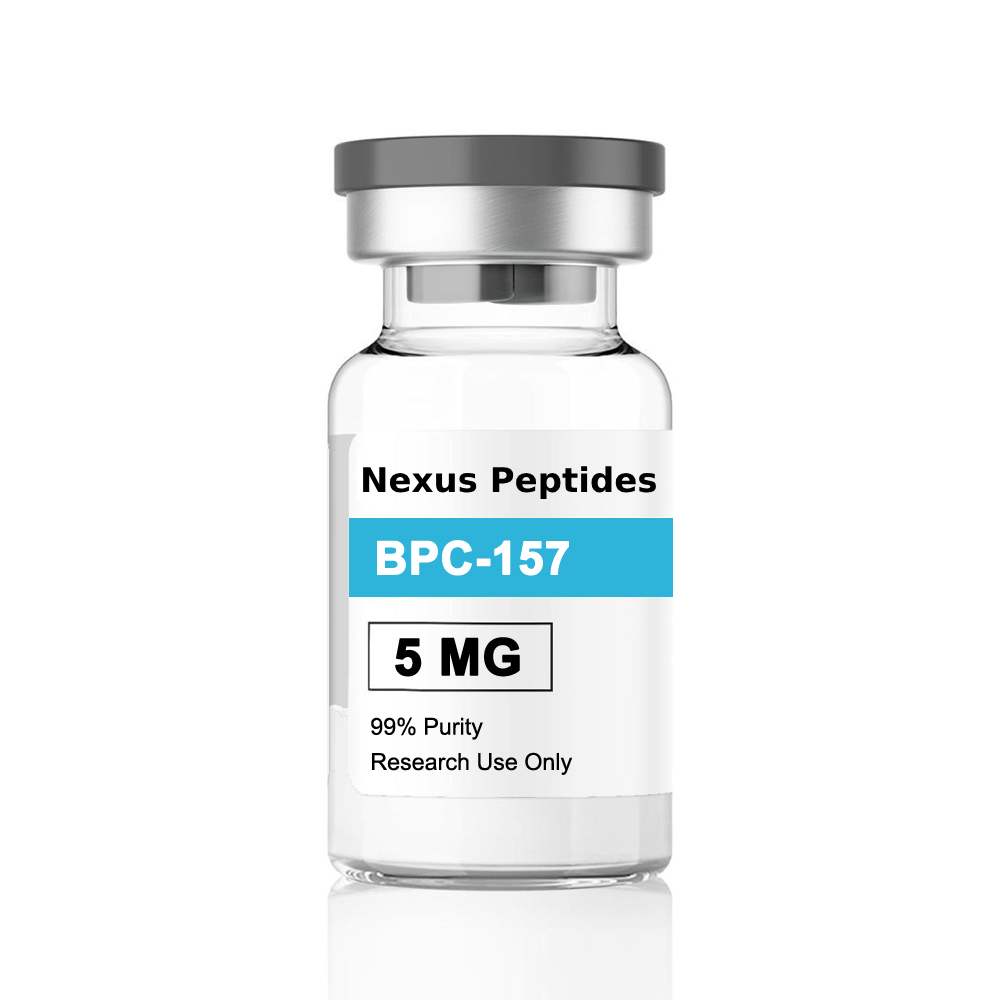



Product Description: BPC-157
Introduction:
BPC-157 (Body Protection Compound-157) is a synthetic peptide that has garnered significant attention in the field of scientific research. With its 15 amino acid sequence, BPC-157 is derived from a naturally occurring peptide found in human gastric juice, which is known for its involvement in various physiological processes. Researchers frequently use BPC-157 in laboratory experiments to explore its potential effects on tissue healing, regeneration, and other biological mechanisms. This high-quality product is designed for use in research settings and offers valuable insight into peptide-based research applications.
What is BPC-157?
BPC-157 is a synthetic peptide that consists of 15 amino acids and is derived from a protective peptide found naturally in the human gastric juice. It has gained popularity among researchers for its potential role in various biological processes, particularly those related to tissue repair and cellular functions. The peptide is often used in research related to wound healing, cell migration, and inflammation. BPC-157 is typically studied in preclinical and experimental settings where its molecular structure and potential interactions with the body’s systems can be observed.
Potential Different Names:
- Body Protection Compound-157
- BPC-157
- Gastric Healing Peptide
- BPC-157 Peptide
- Peptide BPC-157
Chemical Formula:
- C62H98N16O22
Structure:
BPC-157 consists of a chain of 15 amino acids, forming a peptide sequence that is similar to a fragment found in the human gastric juice. The amino acid sequence is designed to interact with various cellular receptors and mechanisms, which may play a role in the peptide's observed effects on tissue repair and other biological processes.
The specific structure of BPC-157 enables it to interact with the body’s complex systems, particularly in processes such as cell migration and tissue remodeling. The sequence and structure are key to understanding the potential behavior of this peptide in laboratory experiments.
How Does it Work?
BPC-157 works by influencing various biological mechanisms, particularly those involved in tissue repair and cellular communication. As a peptide, it is believed to interact with the body’s natural systems to potentially support processes related to healing, inflammation, and cell movement. Although much of its precise mechanisms remain the subject of ongoing research, BPC-157’s molecular structure allows it to potentially affect various cellular pathways, leading to observable changes in tissue remodeling, collagen synthesis, and cell migration.
Due to its involvement in these biological functions, BPC-157 is commonly used in experimental studies investigating wound healing, cellular regeneration, and related areas of research. Its ability to interact with multiple biological systems is what makes it an important peptide in the field of cellular biology.
Conclusion:
BPC-157 is a synthetic peptide that plays a role in various biological processes. Researchers often utilize this peptide in experimental settings to study its potential effects on tissue repair, cell migration, and inflammation. The peptide’s 15 amino acid sequence, derived from a fragment of human gastric juice, provides a unique structure that interacts with cellular systems. The peptide continues to be a valuable tool in scientific research, offering insights into the complex mechanisms of tissue regeneration and repair.
Disclaimer:
This product is intended for research purposes only. It is not approved for human consumption, medical use, or therapeutic applications. Researchers should use BPC-157 in accordance with proper laboratory protocols, and always ensure that safety measures are followed. Compliance with all applicable local laws and regulations is essential when handling and using peptides for research purposes.




